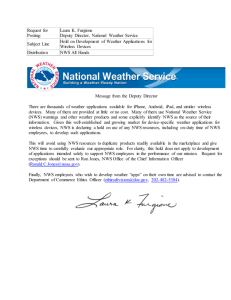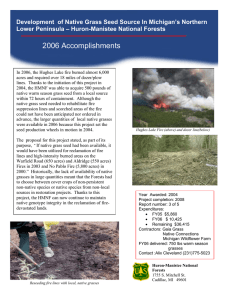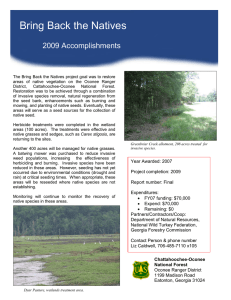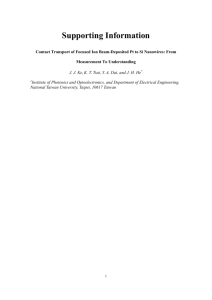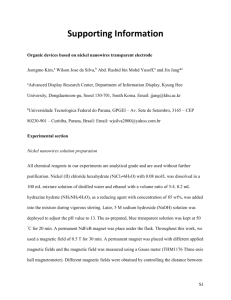Establishing and Managing Native Warm Season Perennial Grasses
advertisement
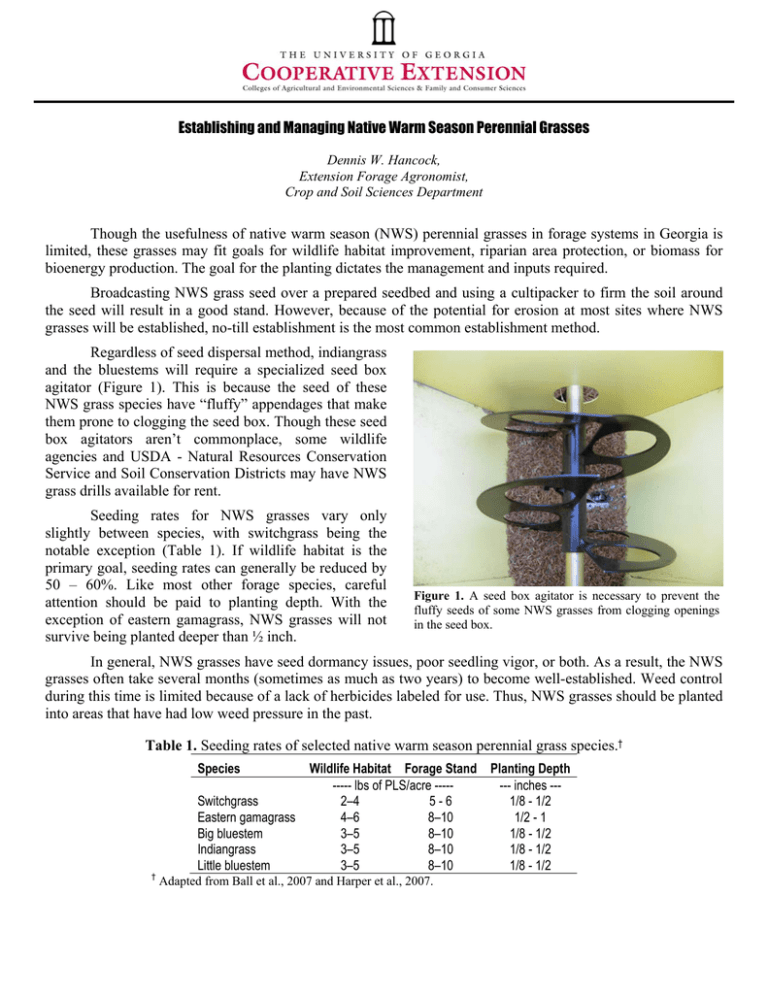
Establishing and Managing Native Warm Season Perennial Grasses Dennis W. Hancock, Extension Forage Agronomist, Crop and Soil Sciences Department Though the usefulness of native warm season (NWS) perennial grasses in forage systems in Georgia is limited, these grasses may fit goals for wildlife habitat improvement, riparian area protection, or biomass for bioenergy production. The goal for the planting dictates the management and inputs required. Broadcasting NWS grass seed over a prepared seedbed and using a cultipacker to firm the soil around the seed will result in a good stand. However, because of the potential for erosion at most sites where NWS grasses will be established, no-till establishment is the most common establishment method. Regardless of seed dispersal method, indiangrass and the bluestems will require a specialized seed box agitator (Figure 1). This is because the seed of these NWS grass species have “fluffy” appendages that make them prone to clogging the seed box. Though these seed box agitators aren’t commonplace, some wildlife agencies and USDA - Natural Resources Conservation Service and Soil Conservation Districts may have NWS grass drills available for rent. Seeding rates for NWS grasses vary only slightly between species, with switchgrass being the notable exception (Table 1). If wildlife habitat is the primary goal, seeding rates can generally be reduced by 50 – 60%. Like most other forage species, careful attention should be paid to planting depth. With the exception of eastern gamagrass, NWS grasses will not survive being planted deeper than ½ inch. Figure 1. A seed box agitator is necessary to prevent the fluffy seeds of some NWS grasses from clogging openings in the seed box. In general, NWS grasses have seed dormancy issues, poor seedling vigor, or both. As a result, the NWS grasses often take several months (sometimes as much as two years) to become well-established. Weed control during this time is limited because of a lack of herbicides labeled for use. Thus, NWS grasses should be planted into areas that have had low weed pressure in the past. Table 1. Seeding rates of selected native warm season perennial grass species.† Species Switchgrass Eastern gamagrass Big bluestem Indiangrass Little bluestem † Wildlife Habitat Forage Stand Planting Depth ----- lbs of PLS/acre ------- inches --2–4 5-6 1/8 - 1/2 4–6 8–10 1/2 - 1 3–5 8–10 1/8 - 1/2 3–5 8–10 1/8 - 1/2 3–5 8–10 1/8 - 1/2 Adapted from Ball et al., 2007 and Harper et al., 2007. Most NWS grasses must not be cut shorter than 8 – 10 in. to avoid reduction of regrowth or having negative effects on the stand’s persistence. Furthermore, NWS grasses often become very stemmy as they mature, and forage quality declines rapidly after the boot stage. As a result, good harvest management is critical when NWS grasses are managed as a hay crop (occasionally the stand may need to be burned to remove residue). This characteristic also makes them generally a poor pasture species, unless under well-managed grazing. These management problems make NWS grasses difficult to recommend for forage production in Georgia. The University of Georgia and Ft. Valley State University, the U.S. Department of Agriculture and counties of the state cooperating. Cooperative Extension, the University of Georgia College of Agricultural and Environmental Sciences, offers educational programs, assistance and materials to all people without regard to race, color, national origin, age, gender or disability. CSS-F021 An Equal Opportunity Employer/Affirmative Action Organization Committed to a Diverse Work Force January 2009 Issued in furtherance of Cooperative Extension work, Acts of May 8 and June 30, 1914, The University of Georgia College of Agricultural and Environmental Sciences and the U.S. Department of Agriculture cooperating. J. Scott Angle, Dean and Director.

